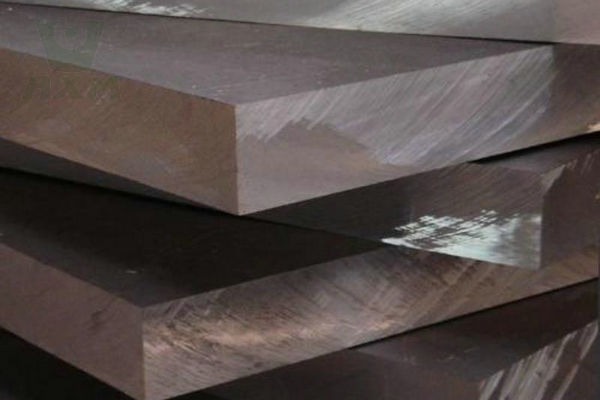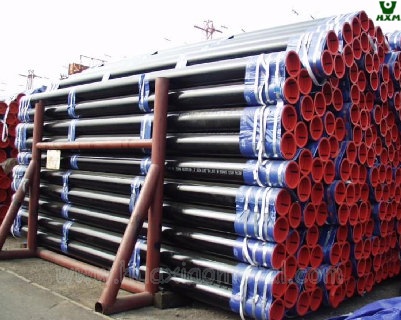Five steel mills were named! Central Environmental Inspector Bulletin!
Not surprisingly, the “Two Highs” project has once again become the focus of the Central Ecological Environmental Protection Inspectorate’s notification.
Recently, the second round of the fourth batch of central ecological and environmental protection inspectors successively reported that the five provinces of Jilin, Shandong, Hubei, Guangdong, and Sichuan have unreasonable “two highs” (high energy consumption, high emissions) project problems.
What are the manifestations of blindly launching the “two highs” project and unfavorable management and control? What is the reason behind it? The reporter sorted out the feedback reports from the 5 provinces.
Inadequate management and control of the “two highs” projects in some places and the problem of pre-construction without approval is prominent
“The energy-saving situation across the country is very severe.” This is the issue pointed out in the “Barometer of Completion of Energy Consumption Dual Control Targets in Various Regions in the First Half of 2021” issued by the National Development and Reform Commission in August this year.
Among them, the energy consumption intensity of Guangdong Province does not decrease but rises, which is a first-level warning; the reduction rate of energy consumption intensity in Sichuan Province does not meet the schedule requirements and is a second-level warning; Shandong, Jilin, and Hubei are three-level warnings. In accordance with the requirements, for regions where energy consumption intensity does not fall but rises, this year, except for the major projects planned by the state, the energy conservation review of the “two highs” projects will be suspended.
It can be seen that behind the severe energy conservation situation is the ineffective management and control of the “two highs” projects in some places. To a certain extent, this also coincides with the problems of the “two highs” projects reported by the inspectors.
It is not difficult to sort out the feedback and find that the most prominent problem of the “two highs” project is “build before approval”.
For example, among the 36 “two high” projects with a comprehensive energy consumption of more than 50,000 tons of standard coal that are under construction or put into production in Hubei Province, 30 of them started construction due to incomplete procedures. The 13 new projects built by Jilin Xinda Iron and Steel Co., Ltd. in Liaoyuan City, Jilin Province since 2018 have had problems with illegal construction or commissioning. Of the 121 “two highs” projects under construction or completed in Guangdong Province that consume more than 10,000 tons of standard coal since 2020, 42 have not been reviewed for energy conservation, accounting for 34.7%.
Since 2020, Leshan City in Sichuan Province has acquiesced to the construction of 16 high-energy-consuming projects, including the technological transformation and expansion of the high-end wall and floor tile ceramic production line of Jiajiang County Huaxing Ceramics Co., Ltd., without passing the energy-saving review.
In addition, some places have a strong impulse in blindly launching the “two highs” project, and there is a momentum of big, fast, grab, and chaotic, and there is even a problem of fraud.
For example, of the 206 “two highs” projects newly built in Shandong Province since 2018, 114 of them have violated regulations. In order to promote the construction of the “Two Highs” project, the Huangshi Xingang (Logistics) Industrial Park in Hubei Province has resorted to falsification on coal substitution. Enterprises that have withdrawn from the statistical database but do not actually use coal will be used as alternative sources of coal due to the change of statistical names. Yangjiang City, Guangdong Province, has basically completed the 250,000-ton stainless steel plate processing project of Yangchun Zhengda Industry, falsely reporting it as a planned project that has not yet started.
In some places, overcapacity reduction has not been implemented properly, affecting the conversion of new and old kinetic energy and industrial upgrading.
For example, Jilin Province Jilin Xinda Iron and Steel Co., Ltd. arbitrarily expanded the 450 cubic meters blast furnace to 660 cubic meters and leased three small blast furnaces illegally constructed by Jilin Jingdong Pipe Industry Co., Ltd. and should be eliminated to produce molten iron in violation of regulations. The 19 local oil refining projects included in the list management in Dongying City, Shandong Province are all illegally filed constructions, involving a production capacity of 60.4 million tons per year.
Shandong Guangyue Chemical Co., Ltd. illegally increased its refining capacity by 3.6 million tons/year; Dongchen Holding Group Co., Ltd. Petrochemical Branch, and other three companies’ atmospheric and vacuum units are outdated production capacities that have been explicitly eliminated by the state. In the first year of the “14th Five-Year Plan”, curbing the blind development of the “two highs” project has become the focus of three orders and five applications by the Party Central Committee and the State Council.
“The Fourteenth Five-Year Plan for the National Economic and Social Development of the People’s Republic of China and the Outline of Long-term Goals for 2035” proposes to resolutely curb the blind development of the “two highs” projects and promote the positive development of green transformation.
On April 30, General Secretary Xi Jinping emphasized when presiding over the 29th collective study of the Politburo of the CPC Central Committee that high energy-consuming and high-emission projects that did not meet the requirements should be resolutely won.
The State Council issued the “Carbon Peaking Action Plan by 2030”, clarifying that it will resolutely curb the blind development of “two highs” projects in the carbon peaking action in the industrial sector.
In addition, the National Development and Reform Commission, the Ministry of Industry and Information Technology, and the Ministry of Ecology and Environment have successively issued documents to guide the low-carbon and green transformation and development of “two highs” projects.
The reason for this importance is that allowing the “two highs” projects to develop blindly will not only directly affect the improvement of ambient air quality but also directly affect the optimization and upgrading of the industrial structure and the adjustment of the energy structure.
What are the reasons for the blind or illegal launch of the two high-level projects?
The “14th Five-Year Plan” period is a critical period for the transformation of my country’s development model. However, there are a large number of “two highs” projects that are planned to be put into production and reach production in certain areas, and they are on the rise.
Why are the central government’s three orders and five applications resolutely curbing the blind development of the “two highs” projects on the one hand, while some places blindly launch the “two highs” projects against the wind?
By sorting out the feedback from the central ecological and environmental protection inspector, the lack of ideological understanding is the main reason for the blind development of the “two highs” project. Some places do not have a deep understanding of Xi Jinping’s ecological civilization thought, fail to firmly establish the concept of “green water and green mountains are golden mountains and silver mountains”, and fail to truly understand the relationship between high-quality development and high-level protection.
For example, the Shandong Provincial Department of Industry and Information Technology neither strives to control new illegal production capacity, nor does it make efforts to rectify existing illegal production capacity, and even proposes to replace production capacity reduction with production control, but it has not been effectively implemented. The illegal capacity of Xinhua Special Steel, which was required to be shut down and sealed in the first round of inspection and rectification plan, was used for capacity replacement in other new projects.
Deviations in development concepts are the key reason for the blind launch of the “two highs” project. The development concept of the one-sided pursuit of GDP growth and GDP-led development in some localities has not been fundamentally changed. The one-sided pursuit of the “two highs” project has a short-term boost to regional economic growth while ignoring the long-term adverse effects of blindly launching. At the same time, affected by the downward pressure on the economy and dependence on traditional development paths, the inertia adheres to the extensive development model of high investment, high consumption, and the cost of resources and the environment.
During the “14th Five-Year Plan” period, Hubei Province plans to launch a large number of “two highs” projects. The new energy consumption of the “two highs” projects will reach 20.53 million tons of standard coal. Orange warning.
Inadequate implementation of responsibilities is also an important reason for the blind launch of the “two highs” project. In some places, there are deployments but no plans for ecological environmental protection work; some have plans that have not been implemented; some regard what has been said as done, and what has been done as done, slogans are shouted loudly, and actions cannot be kept up; some even Make choices, make changes, make discounts, and decentralize the approval and management authority of the “two highs” project, and let go of them. There is a serious shortage of supervision during and after the event.
For example, the production capacity replacement requirements of the 4 million tons of special steel project of southeast China Sea Steel in Guangdong Province have not been implemented, and the energy-saving review has not been passed. Since 2020, the local area has also obtained 1950 acres of forest land use indicators for enterprises through the “integration into parts” method.
In order to curb the blind development of the “two highs” projects, many places have stepped up the investigation of the “two highs” projects in accordance with the decisions and deployments of the Party Central Committee and the State Council and established lists and accounts of related projects.
Taking Shandong as an example, several documents have been issued this year to curb the blind development of the “two highs” project. Among them, the “Alternative Measures for Carbon Emission Reduction of High Energy-Consumption and High-Emission Construction Projects in Shandong Province (Trial)” was the first to propose in the country. The “six major energy-intensive industries” included 16 upstream industries including coal power, refining, and coking. New investment projects in processing, high energy consumption, and high emission links need to be replaced by carbon emission reductions. If the carbon emission reductions of alternative sources have not been implemented, the construction projects shall not be put into production.
Prevention and control at the source is a permanent solution
To curb the blind development of the “two highs” project is not only a key content of the central ecological and environmental protection inspections in the future but also a key task of air pollution in autumn and winter.
On October 29, in the “Key Regions 2021-2022 Comprehensive Air Pollution Control Plan” issued by the Ministry of Ecology and Environment, curbing the blind development of the “two highs” project as a new content, ranked first among the ten main tasks.
Consistent with the central ecological and environmental protection inspector’s emphasis on insisting on systematic planning and source treatment, the comprehensive treatment of air pollution in autumn and winter also emphasizes source prevention and control. The guiding document behind it is the “Guiding Opinions on Strengthening the Prevention and Control of the Ecological Environment Source of High Energy Consumption and High Emission Construction Projects.”
The document issued by the Ministry of Ecology and Environment in May of this year clarified the requirements for ecological and environmental management and guided the development of low-carbon and green transformation of “two highs” projects around strict examination and approval, access, and supervision.
The reason is not difficult to understand, because prevention and control at the source is the cure for the root cause.
As far as the local government is concerned, it is necessary to take the opportunity of the inspection reorganization to focus on three levels to solve outstanding problems.
First of all, it is necessary to solve the problems of ideology and understanding, implement the Jinping ecological civilization thought, truly complete, accurate, and comprehensively implement the new development concept, implement high-quality development requirements into specific tasks, and overcome the impulse of the one-sided pursuit of economic growth. The more difficulties and challenges we face, the more we must strengthen our strategic determination in the construction of ecological civilization, without wavering, slackening, and opening our mouths.
Second, it is necessary to establish a long-term mechanism for ecological protection and continuously consolidate the political responsibility for ecological protection. Through supervision and rectification, we will earnestly carry out self-inspection and self-correction, strictly investigate the projects launched in violation of regulations, and build projects without approval, and strictly investigate and deal with enterprises that violate laws and regulations in accordance with the law.
Implement inventory management for the “two highs” projects, carry out classified disposal, and dynamic monitoring. It is necessary to strictly manage the examination and approval of the “two highs” projects, strengthen daily supervision, adhere to the law and follow procedures, and strengthen source control. Further, improve the policy system, consolidate work responsibilities, and gradually form a complete set of institutional and supervisory systems.
Finally, we must be based on solving outstanding ecological and environmental problems, and always maintain a strict tone. The investigation and punishment of the investigation, the exposure of the exposure, the rectification of the discovered problems, strengthen information disclosure, accept social supervision, continue to transmit pressure, and resolutely curb blind launch.” “Two highs” project impulse.
Of course, the inspector is not to prevent the project from launching and developing, but to further optimize the industrial structure and energy structure by curbing the blind launch of the “two highs” projects, and following the path of green, low-carbon, and high-quality development.
Only in this way can a number of projects that violate the laws and regulations on ecological environment protection be suspended, a number of green industries have been accelerated, a number of traditional industries have been optimized and upgraded, and a number of ecological Quality development and high-level protection.







